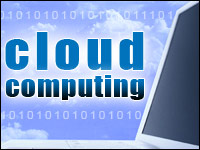
Oracle re-introduced its new cloud/social constellation of stuff last week that it had announced back at OpenWorld. If I count the analyst briefing I got in Redwood Shores in April, it was a re-re-introduction. Oracle is not the only company to follow this strategy. For example, Salesforce follows a conventional triple-tell approach too — tell them what you’re going to say, say it, tell them what you said. But each time Salesforce repeats itself, the messaging gets clearer. When Oracle does it, the message only gets louder.
There was important back channel chatter over Larry Ellison’s claim that there are 100 Fusion applications now available on the Oracle cloud, which many experts of my acquaintance found dubious, though the mainstream press, such as The New York Times, seemed to report as straight news.
Perhaps because of this news and the skepticism with which it was greeted in some quarters, we should take this as one of a dwindling number of opportunities to call bullpucky on the new cloud establishment. Or as I would prefer to call it, “legacy to cloud hybridization.” It’s quite a mouthful but here are some points to consider.
The Obligatory Cloud Offering
Every major legacy software house I know of has adopted cloud messaging and some form of “data center in the sky” technology to stamp “paid” on its obligation to take its customers to the promised land. However, the vast majority of these solutions have merely harvested the low-hanging fruit from multi-tenant cloud and used it to solidify and prolong their hold on the customer base.
So we have data centers hosting conventional applications, which supposedly qualify as cloud, A.K.A. Infrastructure as a Service (IaaS). If you add conventional applications to this, in some circles you automatically get Software as a Service (SaaS), and the further addition of development tools yields Platform as a Service (PaaS).
But if you are like me, you ask how moving the conventional circus to another location really changes anything. You might reap some cost savings from outsourcing some IT management functions, but that is a poor substitute for outsourcing the whole enchilada and enabling people to concentrate on the business.
The Roots of Multitenancy
The big sticking point has, for the last 10 years or more, been the issue of where the data resides and who has access to it. Some of us have become adept at worrying about data leaking out of one database and materializing, like Schrodinger’s cat, elsewhere and causing serious business problems. To me, this is comical and it tells me that although we have invented this high technology, we are not much further advanced from our hominid ancestors.
As Edward O. Wilson recently put it in his latest book, The Social Conquest of Earth, “We have created a Star Wars civilization, with Stone Age emotions, medieval institutions, and godlike technology.” Nowhere do all of these ideas converge as perfectly as in cloud computing.
The cloud computing debate, especially as it refers to data security, might learn from the late medieval or early Renaissance institution we refer to as “banking.” Banks might represent the first multi-tenant human invention, followed closely by water utilities and sanitation services, because they comingle money and overlay it with the metadata of accounts, passwords and statements all designed to keep your money separate from mine.
The whole idea has worked brilliantly for centuries even without computers. The snarky among us might point to the recent banking debacle, but everyone should know that was unregulated commercial banking, not what we’re talking about here.
With banking, we have had hundreds of years to accommodate our “Stone Age emotions” to the idea of virtual sharing. With data, it’s been the blink of an eye, and in the contest between godlike technology and Stone Age emotions, the emotions often win out.
Marketecture vs. Paradigm
So it’s no surprise that so many vendors have adopted the safe and sure approach of separate spindles and virtual servers to define something that by rights ought to be collective and multi-tenant. In the process, they unfortunately demonize the approach that, in banking and commerce, made the Rothschilds and Medicis rich.
In Oracle’s case, it is even more amazing that the company that builds the database on which so much of true cloud computing rests, chooses to go a different way when it comes to its enterprise customers. The most unfortunate part of all of this is that rather than embracing a new paradigm and fully supporting multi-tenant cloud computing, the software establishment has chosen a model that will be obsolete in 10 years, at which point the whole industry will be at roughly the same point it is today. It will be seeking the next marketecture rather than the next paradigm.
You can’t make the proverbial horse drink, which is why there are all kinds of solutions out there.





















































